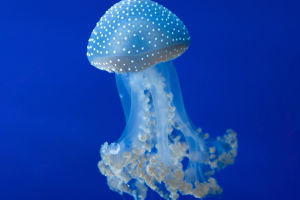Hummingbirds are a fascinating and unique species of bird. They are a family of birds with 2 subfamilies, 104 genera, and 355 species. These birds are named after the buzzing sound made by the vibration of their wings when flying, which resembles that of a bee.
Hummingbirds are known for their small size and brightly colored, iridescent or metallic feathers. The smallest hummingbird is the Cuban bee hummingbird, with an adult body length of only about 5 cm and a weight of about 1.8 grams.
Even the largest hummingbird, the giant hummingbird found in South America, is only 20 centimeters long and weighs about 20 grams.
Most species of hummingbirds are found in the hottest regions of the New World, primarily in South America, where they are abundant. However, some species extend their range into temperate regions during the summer, but only for short stays. Hummingbirds are active between the two regression lines.
When hummingbirds fly, their wings flap rapidly, quickly, powerfully, and persistently. The vibration frequency of their wings can reach more than 50 times per second when flying. Hummingbirds are skilled at hovering "grounded" in flowers for long periods and can even fly upside down.
Hummingbirds are considered to be the most skilled flying birds in the world. They not only have the ability to fly up, down, and forward, but they can also fly backwards, side to side, and hover in the air. This super high flying ability is due to their lightweight, high frequency of wing flapping, flexible shoulder joints, and excellent sense of balance.
Hummingbirds are closely related to swifts and do not have a well-developed olfactory system. They rely primarily on vision. They get about 90 percent of their food from nectar and the rest from arthropods, including flies, wasps, spiders, beetles, and ants. Their thin, long beaks are perfectly adapted for drinking nectar.
Hummingbirds play a crucial role in flower visitation and feeding, as they are the main transmitters of pollen and nectar. When hummingbirds drink nectar, their heads and bodies are coated with pollen, which spreads to other flowers on the ensuing flight, helping plants to fertilize and reproduce.
In addition to nectar and arthropods, hummingbirds sometimes eat fruit and pollen. They require high-energy-dense foods to maintain their high-intensity metabolism
Hummingbirds have a relatively short reproductive cycle and usually complete breeding within one season. The female bird usually builds a small nest on a branch or plant leaf and glues it with spider silk, plant fibers, and other materials. The nest is usually cup-shaped or spherical and about half the size of a fist.
Usually, hummingbirds only lay two eggs, and the female bird needs to incubate them for about 2-3 weeks after each breeding. The hatched chicks spend several weeks in the nest until they are strong enough to leave and start living on their own.
Despite their abundance in nature, hummingbirds face several threats, including habitat loss, climate change, and predation. Protecting hummingbirds and the habitats they depend on is of great significance for maintaining ecological balance and protecting the natural environment.


